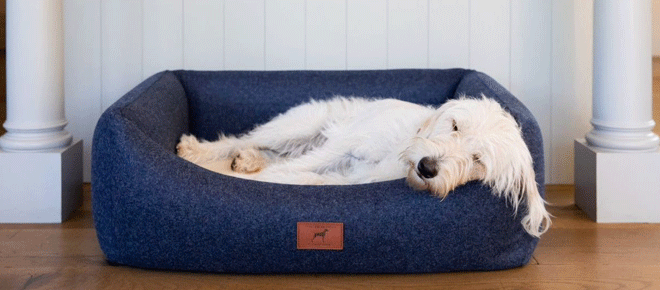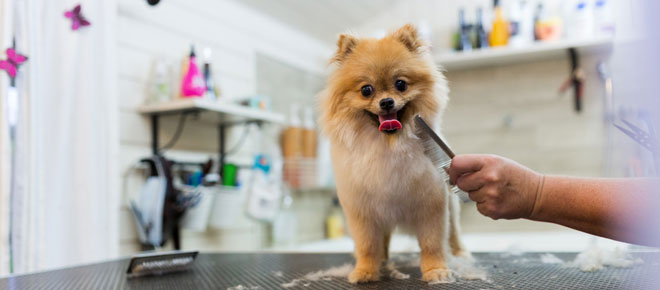5 Common Mistakes to Avoid When Washing Your Pets Bedding

It’s important to keep your pet’s bedding clean so it doesn’t spread allergens to other areas of the house. Over time, pet beds and blankets collect dirt, fur, dander, and other irritants that can aggravate your dog or cat’s skin and respiratory system.
To prevent allergens from spreading throughout the house, wash your pet’s bed every week or so. The exact frequency depends on your pet’s activity level, any allergies in the family, and whether or not your dog has a sensitive stomach.
Not Washing Enough
Whether your dog has their bedding or shares one with you, it's important to wash the bed regularly. The bed is a breeding ground for dirt, pollen, and germs that can lead to a variety of ailments. Luckily, most modern pet beds are machine-washable or come with covers that can be removed and washed. If you want affordable pet bedding washing then check out the PETstock Discount Codes.
Before washing your pet's bed, be sure to vacuum it thoroughly and lint roll it to remove any loose hair before throwing it in the washer. This will help your laundry machine run more efficiently and will reduce the amount of hair that's left behind on your bed.
It's also important to use a detergent that's designed for pets. This will ensure that your dog's bedding stays clean without irritating your pet's skin or eyes.
Some people even choose to purchase a specific pet bed detergent that's specifically designed for dogs and cats. These detergents are usually free of harsh chemicals and are designed to remove odors and stains from the bedding.
If your dog's bedding is super dirty and needs a deeper cleaning, you can soak the bed in a tub filled with warm water and detergent. Soak it for at least 15 minutes, then drain and refill it with clean water.
Another option is to add a little baking soda to the water. This will help neutralize odors and will make the bedding feel softer, Shipp says.
Lastly, be sure to check the bed's tag for any instructions before you wash it. If it says not to be washed in the washing machine, you may need to hand wash it, especially if it's made of foam or other materials that could tear in the machine.
Not Washing Enough Detergent
Dogs are great at bringing their germs into your home, but they also track in dirt and mud from outside. That’s why it’s important to regularly clean your pet’s bed and the covers, especially if you have an active dog or someone in your household has allergies to dogs.
The best way to keep your dog’s bed clean is to wash it often and follow the cleaning instructions on the tag. You can typically machine wash the bed, if it has a removable cover, and some covers can even be tumbled dry in the dryer.
Before you start the washing process, it’s a good idea to remove any stains from the bed, if necessary. If the stain is fresh, a good option is to use an enzyme cleaner that works by attaching to organic matter that causes the stain and breaking it down at its roots.
If the stain is older, a bleach-free and fragrance-free solution can be effective. But make sure you read the label and choose a safe one, as some are toxic to pets.
Some dogs have skin allergies that are triggered by certain detergents. That’s why you must select a detergent that is unscented or fragrance-free, Wismer says.
Aside from that, you’ll want to check the fabric softener on your washing machine and err on the side of caution by using a non-cationic laundry detergent. "Fabric softeners can contain cationic detergents that are toxic to dogs," she adds and could result in drooling, vomiting, oral and esophageal ulcers, and fever.
As a last step, rinse the bedding and run it through an extra rinse cycle to ensure all detergent is removed. Afterward, hang it up to air dry or place it outside on a sunny day.
Not Washing Enough Water
Dogs are incredibly good at bringing in dirt, hair, and other particles from outside in, including into their bedding. As a result, it’s important to keep your pet’s bed clean and free of germs as much as possible.
You should regularly launder your pet’s bed and blankets, to ensure it is hygienic and free from bacteria and viruses. If your pet is very active or has a tendency to shed, you should wash their bedding at least once a week, according to International Furry Health (IFH).
If your pet’s bed or blanket is large enough to fit in a washing machine, follow the manufacturer’s instructions and run it through a cold cycle, using a detergent that’s safe for your pet. It’s also a good idea to rinse the bed or blanket at least twice, after it’s finished the wash, to remove all of the soap and water.
When you do hand-wash your pet’s bed, if it has foam filling, be sure to thoroughly submerge the entire bed and let it soak in hot water for at least 15 minutes. This will help get the stains and bacteria off.
In addition, you should always check the label on your dog’s bed or blanket for any special cleaning instructions before putting it in the washer, advises Deyan. She recommends using a gentle, chemical-free laundry detergent and checking that the cycle you choose is aligned with the care label.
If your pet’s bed is a foam-filled or stuffed type, be sure to dry it properly, so the foam doesn’t clump together in the dryer and make your dog’s bed smell stale. You can hang it up to dry or place it in a tumble dryer, but be sure to stop the cycle frequently and fluff the filling and mats by hand. If you want to save huge money then check out the Pets Discount Code.
Not Washing Enough Soap
Dog beds are one of the germiest places in your home. You come in contact with them every time you change a diaper or your dog comes over for a snuggle, and they are also a great breeding ground for fleas, dander, and dirt.
The best way to keep your pet's bedding sanitary is to wash it regularly. Experts recommend washing it at least once a week to ensure your pet's bed stays clean and free of harmful microorganisms.
However, how often you need to wash your pet's bedding depends on several factors including your dog's activity level, whether they are active outside, or if anyone in your household has allergies. It is also a good idea to vacuum the bed before you wash it so you can remove any loose hair that may be stuck to the fabric.
When you decide to wash your dog's bed, you should use a mild detergent and hot water. Depending on the type of material your dog's bed is made out of, you may need to use an enzyme-based laundry detergent or pretreat stains with a soft bristle brush before washing.
You should also use a laundry detergent that is non-toxic, safe for your dog's skin, and gentle on the environment. Once you have cleaned your dog's bedding, make sure to air dry it in the sun to avoid odors and prevent mold growth from happening.
While you are at it, try to sanitize your washer and dryer too, which will help flush away any extra soap residue. In addition, you should check the care label on your dog's bedding to see if it is machine-washable and to follow any specific cleaning instructions.
Not Washing Enough Detergent
Dog beds are one of the most germ-ridden places in your home. They collect dirt, hair, and dander from your dog’s paws and can harbor disease-causing organisms that can infect humans.
The good news is that you can clean your pet’s bedding regularly to avoid spreading germs and bacteria around the house. Whether your dog is in a memory foam bed or a simple pillow with a cover, following these tips will help you keep his bed clean and healthy.
Regardless of your pet’s type, it is important to wash his bed at least every two weeks. This will help eliminate the risk of staph infections, fleas, ticks, and more, says Tina Wismer, DVM, senior director at the ASPCA Animal Poison Control Center.
To get your dog’s bed clean, fill a tub or sink with warm water and add a few drops of laundry detergent. Then submerge the bed and let it soak for 15 minutes.
You may also want to add a few drops of white vinegar to the water if you have strong odors. This will neutralize the odor and prevent fabric-destroying pet dander.
Another way to keep your dog’s bed clean is by spraying it daily with a mixture of warm water and white vinegar. The vinegar will deodorize the bed, but it will also kill the bacteria that cause stains and odors.
Alternatively, you can take your dog’s bed to the laundromat and have it washed in the machine. However, be sure to read the care label on your pet’s bed before loading it in the washer. If you do not, your pet’s bed will likely be damaged and you could end up with a stinky mess when you return it to the laundry room.
Conclusion
Avoiding these common mistakes when washing your pet's bedding, can help ensure that your furry friend stays healthy and comfortable. Remember to choose the right detergent, wash on a hot cycle, avoid fabric softeners, air dry or tumble dry on low heat, and wash regularly to maintain cleanliness. By following these tips, you can keep your pet's bedding fresh and cozy, and promote their overall well-being.








